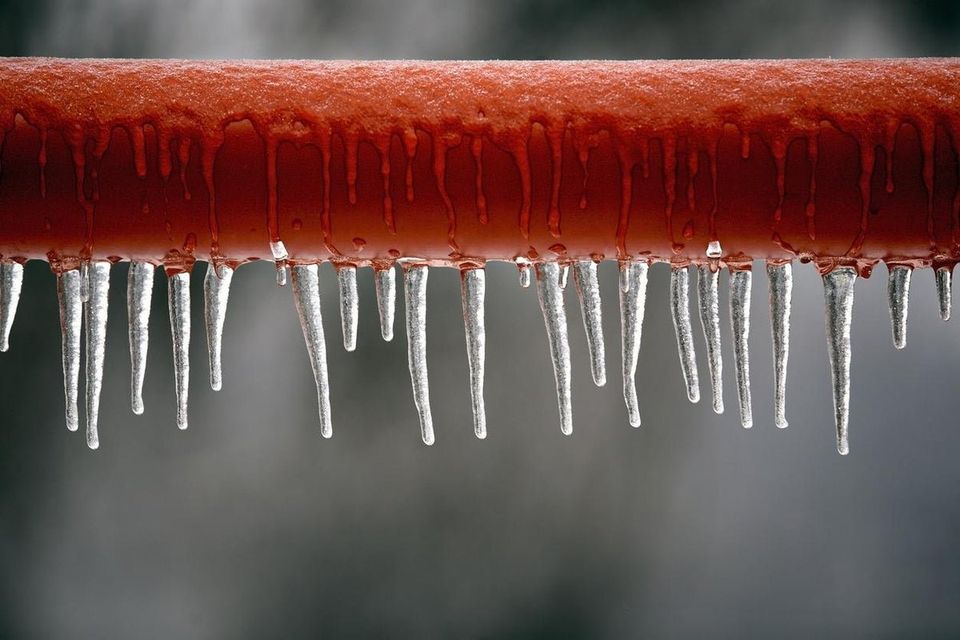Preventing Frozen Pipes: Effective Tips for Winter
Preventing Frozen Pipes: Effective Tips for Winter
Blog Article
Everybody may have their unique idea involving Winter Plumbing Precautions: Preventing Frozen Pipes.

Winter can damage your plumbing, especially by freezing pipes. Here's how to stop it from taking place and what to do if it does.
Intro
As temperature levels decrease, the risk of frozen pipelines boosts, potentially leading to pricey repair services and water damage. Recognizing exactly how to avoid frozen pipelines is important for property owners in cool climates.
Recognizing Frozen Pipelines
What triggers pipelines to ice up?
Pipes ice up when exposed to temperature levels below 32 ° F (0 ° C) for prolonged durations. As water inside the pipes ices up, it increases, putting pressure on the pipeline walls and possibly creating them to burst.
Dangers and problems
Frozen pipes can cause water supply interruptions, building damage, and costly fixings. Ruptured pipes can flood homes and create substantial structural damage.
Signs of Frozen Piping
Identifying frozen pipelines early can avoid them from bursting.
Just how to recognize frozen pipes
Look for lowered water flow from taps, unusual smells or noises from pipelines, and visible frost on subjected pipelines.
Prevention Tips
Shielding vulnerable pipelines
Wrap pipelines in insulation sleeves or use warm tape to shield them from freezing temperatures. Concentrate on pipelines in unheated or exterior areas of the home.
Heating strategies
Maintain interior rooms sufficiently warmed, specifically locations with pipes. Open cabinet doors to allow warm air to circulate around pipelines under sinks.
Shielding Exterior Pipes
Yard tubes and exterior taps
Separate and drain pipes garden pipes before winter months. Install frost-proof faucets or cover exterior faucets with protected caps.
What to Do If Your Pipelines Freeze
Immediate actions to take
If you presume icy pipes, keep faucets open up to eliminate stress as the ice melts. Use a hairdryer or towels soaked in warm water to thaw pipelines gradually.
Long-Term Solutions
Structural adjustments
Think about rerouting pipes far from outside wall surfaces or unheated locations. Include extra insulation to attic rooms, basements, and crawl spaces.
Updating insulation
Purchase high-grade insulation for pipelines, attic rooms, and wall surfaces. Correct insulation assists keep regular temperature levels and decreases the risk of icy pipes.
Conclusion
Stopping frozen pipelines needs proactive steps and fast reactions. By recognizing the causes, indicators, and preventive measures, house owners can secure their pipes during winter.
5 Ways to Prevent Frozen Pipes
Drain Outdoor Faucets and Disconnect Hoses
First, close the shut-off valve that controls the flow of water in the pipe to your outdoor faucet. Then, head outside to disconnect and drain your hose and open the outdoor faucet to allow the water to completely drain out of the line. Turn off the faucet when done. Finally, head back to the shut-off valve and drain the remaining water inside the pipe into a bucket or container. Additionally, if you have a home irrigation system, you should consider hiring an expert to clear the system of water each year.
Insulate Pipes
One of the best and most cost-effective methods for preventing frozen water pipes is to wrap your pipes with insulation. This is especially important for areas in your home that aren’t exposed to heat, such as an attic. We suggest using foam sleeves, which can typically be found at your local hardware store.
Keep Heat Running at 65
Your pipes are located inside your walls, and the temperature there is much colder than the rest of the house. To prevent your pipes from freezing, The Insurance Information Institute suggests that you keep your home heated to at least 65 degrees, even when traveling. You may want to invest in smart devices that can keep an eye on the temperature in your home while you’re away.
Leave Water Dripping
Moving water — even a small trickle — can prevent ice from forming inside your pipes. When freezing temps are imminent, start a drip of water from all faucets that serve exposed pipes. Leaving a few faucets running will also help relieve pressure inside the pipes and help prevent a rupture if the water inside freezes.
Open Cupboard Doors
Warm your kitchen and bathroom pipes by opening cupboards and vanities. You should also leave your interior doors ajar to help warm air circulate evenly throughout your home.

We had been shown that write-up on 6 Ways to Prevent Frozen Pipes from an associate on our other web blog. Do you know someone else who is fascinated by Prevent Frozen Pipes ? Be sure promote it. I treasure your readership.
Get A Free Estimate Report this page